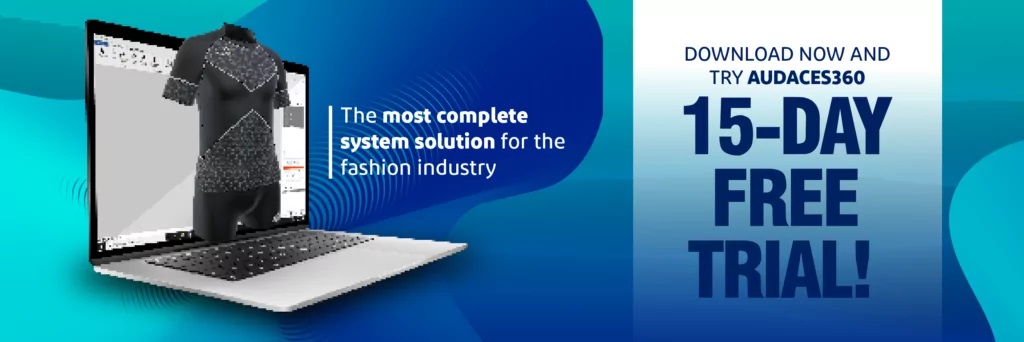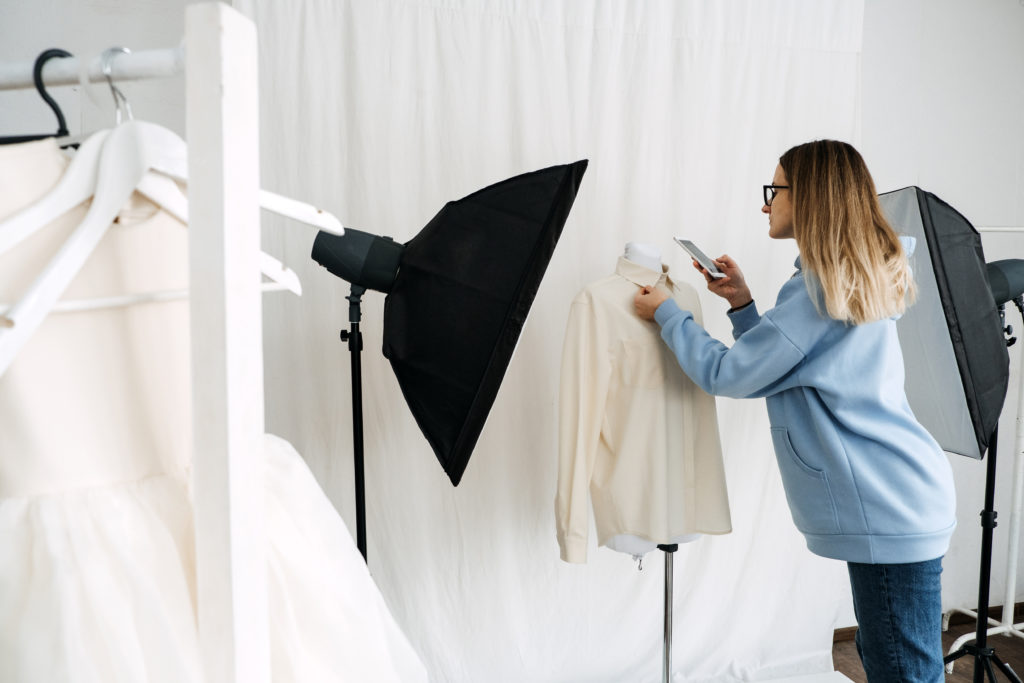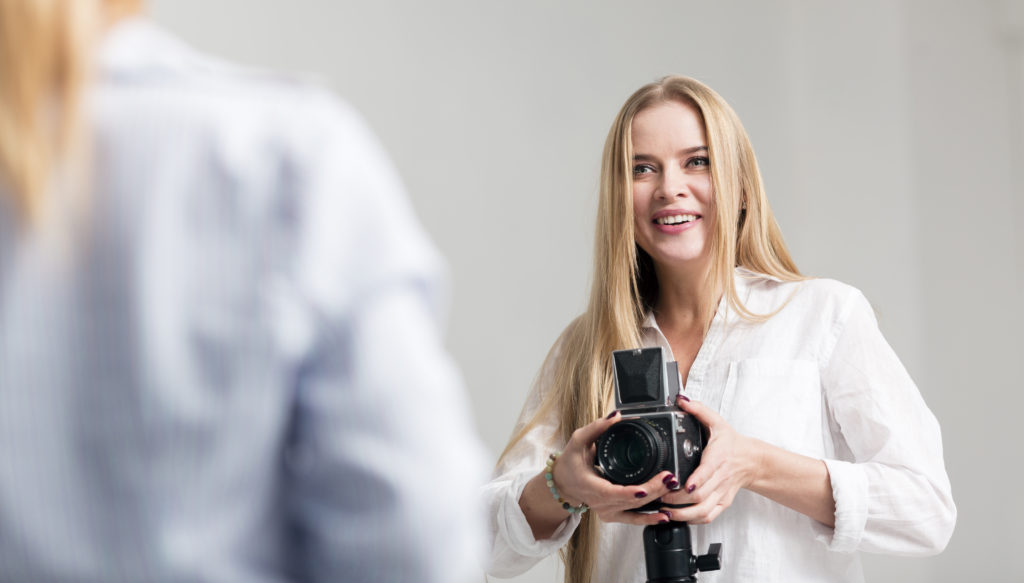Summary
- A fashion editorial goes beyond a collection photo shoot by conveying the story, references, and inspirations behind each piece
- It serves as a medium for brands to communicate their concepts and eventually drive sales
- For assistance in producing a high-quality fashion editorial, explore Audaces360’s multi-solution, available now for a free trial!
Ever wondered how to visually communicate the concepts of a fashion collection to consumers in a creative and efficient manner? A well-crafted fashion editorial can help you achieve this and more!
This resource combines content and photography to elucidate the narrative and inspirations that underlie a collection.
However, creating a top-notch fashion editorial requires effort, commitment, and the right technology.
With this in mind, we’ve curated comprehensive content, complete with step-by-step instructions to help you craft your own editorial.
Sumário
Keep reading to learn more!
What is a fashion editorial?
A fashion editorial is more than just a photo shoot; it is a storytelling medium that conveys the narrative behind a clothing collection, including its inspirations and references.
This serves as a narrative tool for designers to effectively communicate their creative journey to the public.
It’s not uncommon for fashion editorials to be mistaken for parts catalogs or conventional photo shoots, but in reality, they have distinct purposes and objectives.

What’s the purpose of a fashion editorial?
Fashion editorials serve two primary objectives: communication and sales. Learn more about them below:
Communication
In the realm of communication, a fashion editorial plays a vital role in elucidating the creative elements utilized in the development of a collection.
This transparency enables not only the enhancement of a brand’s identity but also the establishment of a coherent visual concept.
As an integral part of the marketing strategy, it significantly amplifies product visibility and outreach in the digital media landscape.
Sales
Once consumers comprehend the references embedded in the creative process of a collection, selling the product becomes notably more straightforward.
Furthermore, this understanding bolsters and solidifies the editorial’s status as an indispensable promotional material.
How to create a fashion editorial?

Now that you understand what a fashion editorial is and its core objectives, it’s time to dive into the step-by-step process of creating your own.
Follow our tips below:
Research current trends in your sector
Every fashion editorial should kick off with a comprehensive research phase.
This involves gathering references, both internal (related to the collection itself) and external (such as international fashion trends).
Collect as much inspiration as possible and then narrow down your selection to include only the most essential elements.
Learn more: Uncover the benefits of fashion trend forecasting for your clothing business
Choose a theme for your editorial
The choice of an editorial theme is pivotal to its success. It should resonate with consumers, mirroring the themes of the collection, all while being visually engaging and capable of conveying a compelling narrative.
This is where the earlier research comes into play, helping you identify rising visual, aesthetic, and conceptual elements that can be incorporated into your visual communication strategy.
Plan and define necessary resources
Once you’ve settled on a theme, it’s time to prepare all the essential resources for the successful execution of your editorial. These features include:
- Setting, theme, and composition.
- Lighting, photography, filming, and similar equipment.
- Models, wardrobe, costumes, looks, and the order of photography.
- Post-processing to refine raw materials into a well-defined editorial.
- Marketing and promotional strategies to ensure your material reaches and engages the target audience effectively.
This planning phase may involve collaboration with multiple individuals, and a valuable tip is to create a detailed execution schedule, similar to what you’d use in the production of a fashion collection.
This schedule, combined with a well-structured roadmap, ensures that everything proceeds smoothly, on time, and in accordance with your vision.
Learn more: 4 top tips for a successful fashion collection launch
Pay attention to the scenery of the photos
The setting, along with the clothing items, takes the spotlight in a fashion editorial.
This is where meticulous attention to detail is crucial. Ensure that the chosen setting aligns with the editorial’s theme and the inspirations behind your collection.
The objective of the editorial is to harmoniously weave all these references together.
Factors like location, lighting, and weather conditions directly impact the choice of your photo shoot location. Be mindful of these elements as they play a significant role in the overall outcome of your editorial.
Decide on wardrobe and makeup
Given the vast number of pieces in your collection, it’s essential to be selective as a fashion editorial is not a catalog.
Determine which pieces will be featured, taking into account the desired effect, the overarching theme, and your promotional strategies.
In the case of a smaller capsule collection, maximize the use of the pieces when composing the looks for the editorial.
Learn more: 9 fabrics with the perfect fit to use in your fashion collection
Invest in professional equipment
The equipment used in your editorial directly influences the quality of the final material.
Therefore, investing in high-quality professional resources is essential to ensure that your editorial aligns with your strategic goals.
Make room for creativity
A fashion editorial is, at its core, a piece of art that should captivate the eye. It serves to artistically convey the inspirational elements of the creative process.
This emphasis on creativity should permeate all aspects of the editorial, from its conceptualization to the final product.
Give creativity the space it deserves!
Count on effective photo editing
Post-production is essential for applying meticulous adjustments to aesthetic elements, such as retouching and other enhancements, to ensure that the editorial aligns with your initial vision.
Be sure to invest in this stage to guarantee successful communication and promotion of your collection.
What are the essential professionals for a fashion editorial?

The creation of a fashion editorial is a multifaceted endeavor that needs the collaboration of numerous professionals. These key roles include:
- Fashion producer: The fashion producer is responsible for making creative concepts viable. They contribute to decision-making on the creative front and ensure the seamless execution of the editorial.
- Photographer: The professional responsible for capturing the visuals, either in alignment with the producer’s vision or based on their own technical expertise. They work closely with the creative team to meet the project’s expectations.
- Photo editor: The photo editor takes charge of the post-production stage, refining and enhancing the images to meet the desired aesthetic.
- Stylist: The stylist is responsible for curating the looks and other aesthetic elements that define the editorial’s visual identity.
- Hairdresser: A hairdresser is tasked with creating and maintaining the desired hairstyles for the models, ensuring they align with the overall concept.
- Makeup artist: Contribute to the models’ appearance by applying makeup that complements the editorial’s theme and style.
- Models: They embody the vision of the creative team, effectively communicating the narrative and aesthetics of the collection.
What is a fashion editorial brief?
To streamline the fashion editorial creation process and make it more efficient, one valuable tip is to craft a comprehensive brief.
A fashion editorial brief is a document that encapsulates specific details concerning the theme, research, and the intended goals for fashion production.
An effective brief is pivotal, not only for its descriptive quality but also for providing all involved professionals direct access to vital project information.
This not only simplifies the workflow but also encourages the free exchange of ideas, fostering a collaborative and productive atmosphere.
Fashion editorial: iconic examples
A fashion editorial offers a canvas for the exploration of various themes, and this creative freedom can sometimes lead to uncertainty about which theme to choose.
During such moments, it’s helpful to remember the editorial’s primary purpose, which is to convey the concept of a collection.
From there, the creative process becomes more straightforward. In fact, there are notable fashion editorials that have made history by capturing attention and leaving a lasting imprint on the world of fashion advertising.
Here are some of the most prominent ones:
- Vanity Fair (2015) – Caitlyn Jenner
- Dazed (2014) – Lupita Nyong’o
- Calvin Klein (2015) – Justin Bieber
- Versace (2014) – Madonna
- Paper Magazine (2017) – Rihanna
- Yves Saint Laurent (1966) – Pop Art.
Rely on Audaces for organizing your fashion editorial

With the power of technology, Audaces offers a multi-solution for organizing not only your fashion editorial but your entire collection, spanning from initial sketches to the final delivery of your pieces.
Explore Audaces’ programs designed to elevate your everyday production:
Audaces360
Audaces360 is a comprehensive multi-solution platform designed to help you conquer the core challenges of the fashion industry.
This integrated system seamlessly connects all phases of the production chain, from the creative process to manufacturing, ensuring the success of your fashion collection from its inception.
Audaces Isa
Efficiently managing the product life cycle is critical for anyone launching a fashion collection. Audaces Isa has been purpose-built to facilitate this journey.
This advanced and technologically driven system allows you to monitor the production status of each piece, providing meticulous control and organization of the technical aspects of your collection.
Conclusion
Crafting a fashion editorial is a demanding endeavor, but with practical insights, it becomes possible to translate the concepts inherent in fashion collections.
This process enhances visibility, piques interest, drives engagement, and ultimately boosts sales.
For the latest updates and insights on the fashion industry and its evolving technologies, turn to the Audaces blog.
And now that you’ve gained insights into editorials, why not delve into other tips to propel your fashion collections? Download our free e-book and stay in the know!
FAQ
A fashion editorial is a photographic collection that tells the story of a clothing collection, including its references and inspirations.
To create a fashion editorial, research sector trends, select a theme, and define costumes and scenery.
Fashion editorials primarily serve two objectives: communication and sales.










